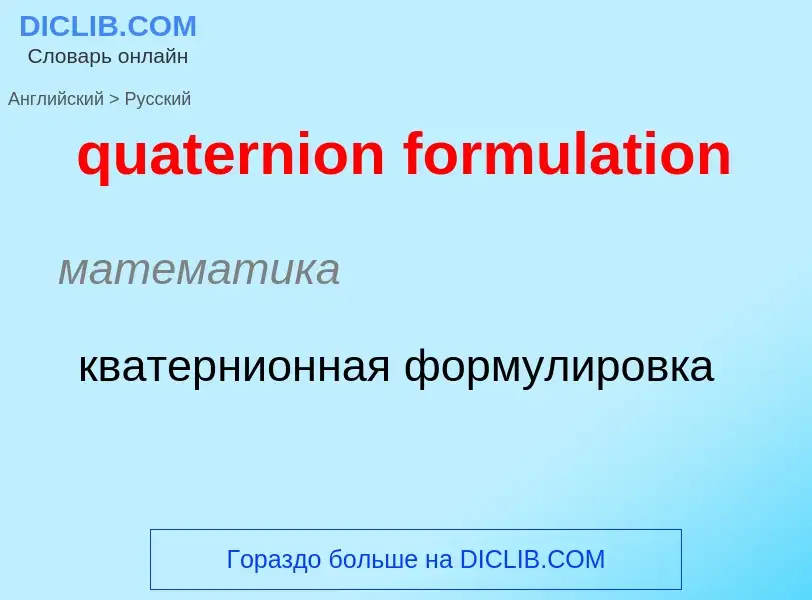Traduction et analyse des mots par intelligence artificielle
Sur cette page, vous pouvez obtenir une analyse détaillée d'un mot ou d'une phrase, réalisée à l'aide de la meilleure technologie d'intelligence artificielle à ce jour:
- comment le mot est utilisé
- fréquence d'utilisation
- il est utilisé plus souvent dans le discours oral ou écrit
- options de traduction de mots
- exemples d'utilisation (plusieurs phrases avec traduction)
- étymologie
quaternion formulation - traduction vers russe
математика
кватернионная формулировка
медицина
лекарственная форма
медицина
фармацевтический состав
Wikipédia
In abstract algebra, the biquaternions are the numbers w + x i + y j + z k, where w, x, y, and z are complex numbers, or variants thereof, and the elements of {1, i, j, k} multiply as in the quaternion group and commute with their coefficients. There are three types of biquaternions corresponding to complex numbers and the variations thereof:
- Biquaternions when the coefficients are complex numbers.
- Split-biquaternions when the coefficients are split-complex numbers.
- Dual quaternions when the coefficients are dual numbers.
This article is about the ordinary biquaternions named by William Rowan Hamilton in 1844 (see Proceedings of the Royal Irish Academy 1844 & 1850 page 388). Some of the more prominent proponents of these biquaternions include Alexander Macfarlane, Arthur W. Conway, Ludwik Silberstein, and Cornelius Lanczos. As developed below, the unit quasi-sphere of the biquaternions provides a representation of the Lorentz group, which is the foundation of special relativity.
The algebra of biquaternions can be considered as a tensor product (taken over the reals) where C or is the field of complex numbers and H or is the division algebra of (real) quaternions. In other words, the biquaternions are just the complexification of the quaternions. Viewed as a complex algebra, the biquaternions are isomorphic to the algebra of 2 × 2 complex matrices M2(C). They are also isomorphic to several Clifford algebras including H(C) = Cℓ03(C) = Cℓ2(C) = Cℓ1,2(R),: 112, 113 the Pauli algebra Cℓ3,0(R),: 112 : 404 and the even part Cℓ01,3(R) = Cℓ03,1(R) of the spacetime algebra.: 386

